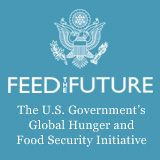Publication
Farming and Ranching in Aquatic Systems
Details
Author(s):
James E. Lannan
Type of Document:
Scholarly Article
Publisher/Journal:
Food Reviews International
Date of Publication:
n.d.
Place of Publication:
Not Available
Links
Description
Abstract: This issue of Food Reviews International is devoted to aquaculture, the farming and ranching of aquatic species. The editors of Food Reviews International elected to prepare this special issue in response to growing interest among the global community of food producers, processors, and food-related interests about seafood production in General, and specifically about aquacultural production. This issue is intended to provide a broad perspective on the nature and extent of contemporary aquacultural production as well as a glimpse of what the future may hold.
This collection of articles begins with a global Overview of aquaculture production. This is followed by in-depth perspectives on several aspects of aquacultural research and technology, and an article describing the role of international development agencies in aquaculture. Finally, three successful aquacultural producers, each working in a different region of the world, present their insights into the business of aquaculture.
Each article is authored by a recognized leader within the global aquacultural community. As sometimes happens when sampling a global community, the technical contributors tend to be representative of a particular region, in this case North America. The regional bias is unfortunate but should not obscure the global implications of the several articles. The Generalizations may be directly extended to other regions and species of reader interest.
Collectively, the global of the contributing authors of this issue is to provide information about aquaculture to the food-related industries and sciences. There is a consensus among the global aquacultural community that increasing communications with other food-related disciplines would be mutually beneficial. In fact, many aquaculturists regard themselves as food producers. Further, although aquaculture employs specialized methods and has evolved its own jargon, it also shares many commonalities with other food-producing systems. Hopefully, this volume will enable readers to uncover some of these common denominators and discover familiar concepts and constraints.
Principal among the recurring themes explicit or implied in the included articles is that aquaculture is a form of agriculture and is based on familiar agricultural concepts. Therefore, aquaculture systems can be evaluated in exactly the same way that one would evaluate agricultural production systems. Additionally, the agricultural concepts of efficiency and intensity are directly applicable to aquaculture.
